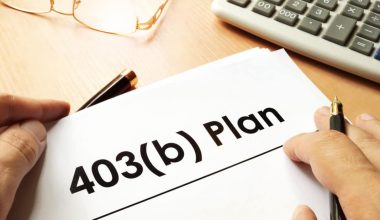The mortgage loan application process might be intimidating, especially if you’re a first-time home buyer.
However, you are not required to go it alone. You will be guided by your real estate agent and mortgage loan officer.
It’s also beneficial to understand what’s going to happen at each stage of the process so you can be ready to ask the proper questions and make the best decisions. Here’s what you can expect.
Step-by-step Guide to the Mortgage Loan Application Process
#1. Budgeting: What kind of house can you afford?
Before beginning the mortgage loan process, some actions must be taken. Most importantly, determine how much housing you can afford. This allows you to set reasonable expectations for property hunting and selecting a mortgage loan.
Instead of attempting to establish your maximum house purchase price, it may be more prudent to determine the monthly payment you can afford.
Then, using today’s mortgage interest rates, you can go backward to establish your maximum home buying power.
What is included in your mortgage payment?
Current mortgage interest rates are a critical component of the equation.
A one-percentage-point fluctuation in interest rates, for example, can increase or decrease your spending power by tens of thousands of dollars.
Similarly, real estate property taxes influence the amount of your payment. They may be lower in some of your region’s communities or cities. Furthermore, condo association dues can differ from building to building.
Your monthly payment may also include homeowner’s insurance costs.
When you focus on a maximum monthly payment rather than a maximum home purchase price, you can be certain that your budget includes all of your ongoing housing costs, not just mortgage principal and interest.
You’ll also need to determine how much money you have in savings. This will determine how much money you have for a down payment and closing costs. (Ambien)
#2. Obtain loan pre-approval.
After you’ve determined your own budget, you can begin looking at properties in your pricing range. This is also the point at which you take the initial move toward obtaining a mortgage.
The first step in this process is to obtain a lender’s mortgage pre-approval letter. Based on your savings, credit, and income, this letter illustrates how much money a mortgage lender would allow you to borrow.
You should do this before making an offer on a house.
Because the seller needs strong documentation that you’re qualified for a loan to acquire the home, most sellers and realtors will not even entertain an offer unless the buyer is pre-approved.
Sellers prefer a preapproval letter over a prequalification letter because a mortgage loan process preapproval letter demonstrates your ability to afford the home.
It is important to note that being “prequalified” is not the same as being “preapproved” for a mortgage.
Both words indicate that a lender is likely to loan you a particular amount of money. However, realtors prefer a preapproval letter over a prequalification letter.
This is due to the fact that prequalification letters are not checked. They are simply budget estimates based on a few questions. A pre-approval letter, on the other hand, has been checked against your credit record, bank statements, W2s, and other documentation. It is a formal offer to lend from a mortgage firm, not just an estimate.
When you acquire your final mortgage, you are NOT obligated to utilize the same lender you used for pre-approval. If you find a better price, you can always switch lenders.
#3. Locate a house and make an offer
Now that you’ve been pre-approved, it’s time to start looking for a home.
It’s time to make an offer after touring listings with your agent and selecting the property you desire.
Your real estate agent will understand how to structure the offer. It should include contingencies (or conditions) that must be met before the transaction is finalized.
When you submit your offer, you should also submit your earnest money deposit.
Earnest money is a monetary deposit given to secure your offer on a home and demonstrate your seriousness about purchasing. Depending on local custom, it could be as low as $500 or as much as 5% of the purchase price or more.
Speak with your real estate agent ahead of time about the size of the earnest money deposit, and be prepared to write a check or make a wire transfer when your offer is accepted – especially if you’re purchasing in a competitive market.
#4. Select a mortgage lender
Now that you’ve chosen a home and your offer has been accepted, it’s time to decide on a lender.
You have the option of sticking with the lender you used during the pre-approval process or switching to another lender. Shopping around with at least three different lenders is always a smart idea.
When shopping for a mortgage, keep in mind that your rate is not only determined by your application. It is also determined by the sort of loan obtained.
VA mortgage rates are frequently the lowest of the four primary loan programs, even topping conventional mortgage rates. USDA and FHA loan rates appear inexpensive on the surface, but keep in mind that these loans need mandatory mortgage insurance, which will raise your monthly mortgage payment. PMI is also required on conventional loans, but only if the down payment is less than 20%.
Examine the rates and costs of several lenders, but also inquire about the types of loans available to you.
There may be greater prices available than what you see advertised online, particularly if you are a veteran who qualifies for the VA home loan program.
#5. Submit a full mortgage application.
Following the selection of a lender, the following step in the process is to complete a full mortgage loan application.
The majority of this mortgage application process was done at the pre-approval stage. However, a few additional documents are now required to move a loan file through underwriting.
Your lender, for example, will require a completely written purchase agreement as well as documentation of your earnest money deposit.
Your lender may also want updated verification of your income, liabilities, and assets, such as pay stubs and bank account statements. This process will be more difficult if you are self-employed. Tax returns may be required.
If you receive social security or long-term disability coverage, you must provide supporting documentation to your lender.
This process will assist in determining your debt-to-income ratio, which lenders use to decide if you can afford the monthly payments on the new loan.
Within three business days, you will receive a Loan Estimate outlining the exact rates, fees, and terms of the home loan you are being offered.
#6. Request a house inspection
You can order a home inspection as part of the mortgage loan process. Home inspections are normally suggested, but in a competitive market, some purchasers choose to forego them.
A thorough house inspection provides vital data regarding the home that are not visible on the surface.
A home inspector will look over the following items:
- The structure of the house
- Foundation
- Electrical
- Plumbing
- Roofing
A house inspection is vital because it informs the buyer about the possibility of pricey repairs. If the house requires major repairs, you may want to seek elsewhere.
Even if you decide to proceed with the purchase, what is discovered during the inspection can be used in a sales negotiation between the buyer and seller, as well as their real estate agents.
#7. Get the house evaluated.
Your lender will also arrange for an appraiser to provide an unbiased evaluation of the home’s value.
Most lenders utilize a third-party company that is not directly related to the lender.
The assessment ensures that you are paying a reasonable price for the home.
In addition, in order for the loan to be approved at the stipulated purchase price, the home must appraise for that amount.
#8. The mortgage loan process and underwriting
The mortgage processing stage begins once your complete loan application is submitted. This is primarily a waiting period for you, the customer.
But, if you’re interested, here’s what goes on behind the scenes:
- The Loan Processor will first prepare your file for underwriting.
- All relevant credit reports, as well as your title search and tax transcripts, are ordered at this time.
- The application’s information, such as bank deposits and payment histories, is confirmed.
- Respond to any queries as soon as feasible throughout this period to ensure that underwriting goes as smoothly and swiftly as possible.
- Late payments, collections, and/or judgments all necessitate a written explanation.
The file is given to the underwriter once the processor has completed a complete package with all verifications and paperwork.
During this time, the underwriter will thoroughly review your information. It is their responsibility to “nitpick” the information you’ve provided, looking for missing pieces of information and red flags.
They’ll concentrate on the three Cs of mortgage underwriting:
- Capacity: Will your monthly income and present debt load allow you to make the loan payments?
- Credit: Does your credit history demonstrate that you pay your bills on time?
- Collateral: Is the value of the property you’re purchasing adequate security for the loan? (In other words, did the appraisal reveal that the purchase price and home worth are comparable?)
Your loan officer may contact you with questions during the underwriting process. To guarantee a smooth underwriting process, you should react as soon as feasible.
#9. The Closing
You’ve arrived at the big moment: closure.
The lender will submit your closing documents to the closing attorney or title firm, along with instructions on how to prepare them.
Prepare a large stack of paperwork to sign on the closing date. Traditionally, this is done in person, however, e-closings are becoming increasingly prevalent and may be an option.
The Closing Disclosure is one of the more crucial documents. It should resemble the Loan Estimate you received when you first submitted the full loan application.
The Loan Estimate informed you of the anticipated expenditures. These charges are confirmed in the Closing Disclosure.
In fact, the two should be very close. Laws keep their differences to a minimum.
If everything is in order, you will sign all of your documents, receive your keys, and you will be a homeowner!
What Documents Will I Need To Apply For A Mortgage?
Prepare all of your papers before applying for a loan to expedite the process. Let’s go over the documents you’ll typically require when applying for a mortgage.
#1. Income Documentation
Your lender will want several pieces of documentation to prove your income. You may be required to produce the following documents:
- At least two years’ worth of federal tax returns
- W-2s and pay stubs from the last two years
- If you’re self-employed, you’ll need 1099 papers or profit and loss statements.
- Divorce decrees, child support orders, and any other legal papers confirming that you will continue to receive payments for at least another three years
- If relevant, legal evidence demonstrates that you have been receiving alimony, child support, or other types of income for at least 6 months.
#2. Credit Documentation
Your lender will want verbal or written authorization to view your credit report. They’ll look at your credit history and check for unfavorable issues (such as bankruptcy or foreclosure) that might make getting a loan harder.
If you had an extenuating event that harmed your credit, explain it to your lender and offer documentation. For example, if you missed a few credit card payments due to a medical emergency, you should provide a copy of your medical bills to your lender. This demonstrates to your lender that the negative marks on your report were the consequence of a single incident rather than a pattern.
#3. Evidence of Assets and Liabilities
When verifying your assets, your lender may want some or all of the following:
- Account statements for up to 60 days that validate the assets in your checking and savings accounts
- Your most recent retirement or investment account statement
- Documentation for the sale of any assets you sold before applying, such as a copy of the title transfer if you sold a car.
- Proof of any donation cash deposited into your account during the last two months
Your lender may also request more information on any debts you owe, such as a student loan or an auto loan. Cooperation with your lender only facilitates the process, so give any needed information as soon as feasible.
Mortgage Process FAQs
What are the 5 parts of a mortgage?
- Principal.
- Interest.
- Your Mortgage Principal.
- Your Mortgage Interest.
- Your Escrow.
How Long Does The Mortgage Process Take
In general, it takes two to six weeks to get a mortgage approved. The application process can be sped up by using a mortgage broker to get the greatest prices for your specific situation. A mortgage offer is typically good for six months.
What goes on in the mortgage approval process?
When you apply for a mortgage, lenders consider a number of criteria in order to determine your ability to repay the loan. Your income and job history, credit score, debt-to-income ratio, assets, and the type of home you want to buy are all important factors.
- MORTGAGE UNDERWRITING: Steps to the MU Process
- Manual Underwriting Process for Mortgages, FHA & VA Loans
- Secondary Mortgage Market: Step By Step Guide On How It Works
- Mortgage: Simple 2023 Guide for Beginners and all you need Updated!!!
- MORTGAGE RATES FOR INVESTMENT PROPERTY: Current Mortgage Rates for Investment Property






